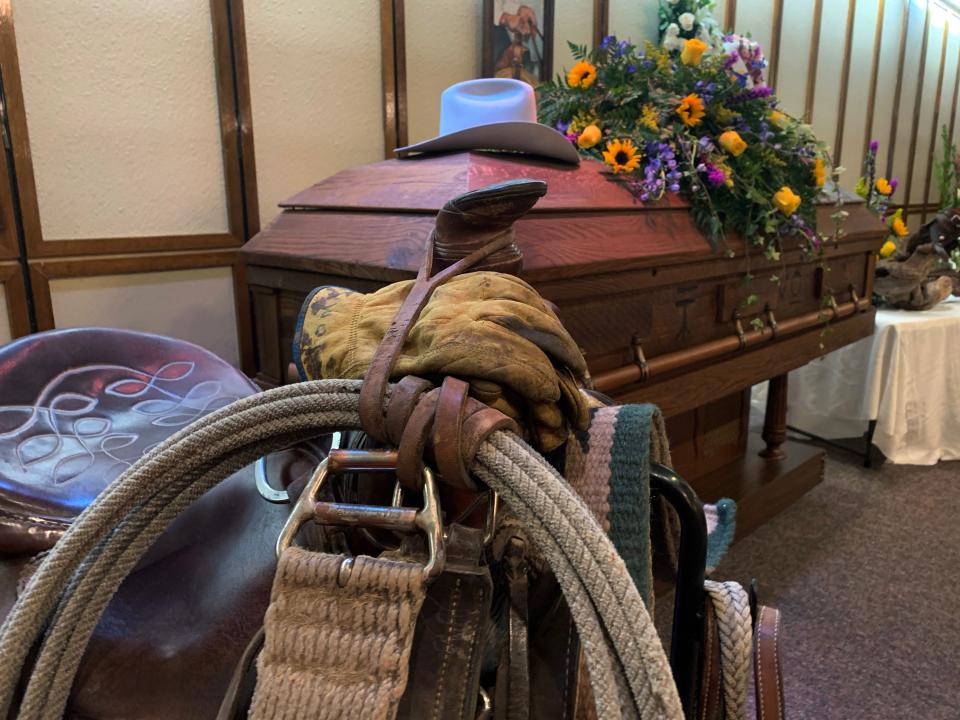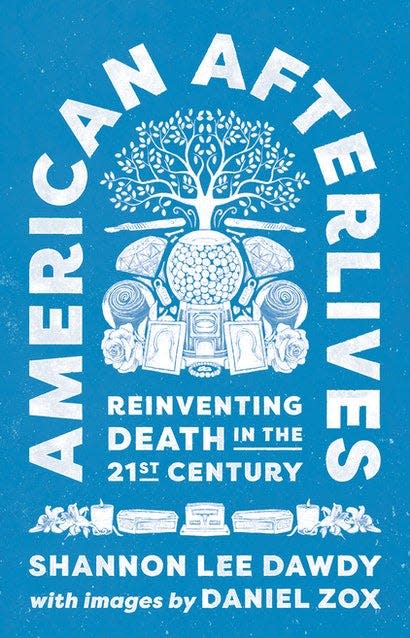'American Afterlives' charts growing marketplace for new death rituals
This review has been updated to clarify that the "gumball machine" referred to herein was a one-of-a-kind piece, and is not available for sale.
Death may be thought of as a journey, a transformation or simply a hard stop to existence. In any case, it will happen to us, and before it does we get to practice saying goodbye to others, including those we love.
Sometimes I suspect the loss of others is more difficult to accept than the concept of our own death.
Increasingly, Americans are formalizing their goodbyes with individually tailored ceremonies and rituals, independently of any shared cultural tradition. The innovations extend to the handling of the deceased’s remains as well.
Those traditions have evolved over generations and in response to historical conditions — embalming, for instance, grew in popularity following the Civil War, when the practice bought time for soldiers to be returned home for burial.

Yet, as documented in a recent book by Shannon Lee Dawdy, the last century has seen an explosion in the U.S. of individualized funerary rites and ways of disposing of remains.
“American Afterlives: Reinventing Death in the 21st Century” presents years of research into the ceremonies and rituals through which Americans process death, in the form of a personal narrative rather than an academic work. Dawdy, an anthropologist and archaeologist, includes her own experiences and questions about death, body and soul.
Our options are not necessarily limited to familiar customs of burial and cremation. Your loved one can be converted into compost, or their remains may be embedded in artifacts, lit up among fireworks, sown into ammunition or shot into space.
Some practices may seem irreverent to an outsider, as when the departed are embalmed into living poses for memorial gatherings. Dawdy found one company had built a prototype gumball machine that dispenses remains in small plastic cups: For a nickel or whatever, you could take some of your late uncle home.

The explosion of options correlates with rapidly shifting beliefs and values involving formal religion, spiritualism and even ecology. Cremation, we learn, is a big greenhouse gas emitter, but greener methods are being developed. Meanwhile, there is growing interest in being “recycled” after death to nourish trees or memorial gardens.
The design, maintenance and marketing of cemeteries and monuments has rapidly evolved as well, sometimes reflecting socio-economic divisions among communities of the living as well as changing views of memorial spaces and the connection between personhood and the body.
With the freedom to invent funerary rites and dispositions of remains, there is also an exploding marketplace offering a range of options and accessories for clothing, memorializing and disposing of the dead. Whatever you believe about the relationship between the living and the deceased, or the presence of a person beyond death for future generations or for Earth itself, there is likely a commercial service ready to cater.
Dawdy concludes, however, that the relationship between enterprise and individualist approaches to spiritualism, is much more than “the Starbucks phase” of death ritual. She detects a hunger for personally significant rites and a desire either to connect with a shared tradition or to create new remembrances and therapeutic rites of passage.

“Consumer choice has become something more than taste,” she argues, in support of invented ritual. “It is an act of self-determination that carries over into their afterlife.”
Paradoxically, perhaps, Dawdy suggests the uniquely American, individualist “have it your own way” approach to mortuary practices may be leading to a greater sense of a shared connection to an Earth that outlives all nations and empires.
"American Afterlives" is also a personable book notable for its affection for life, the richness of American culture and the brief, baffling experience of living as a human.
“American Afterlives: Reinventing Death in the 21st Century,” by Shannon Lee Dawdy. Princeton University Press, 246 pages, $27.95 (hardcover).
Algernon D'Ammassa can be reached via adammassa@lcsun-news.com or @AlgernonWrites on Twitter.
More Desert Sage columns:
This article originally appeared on Las Cruces Sun-News: 'American Afterlives' charts growing marketplace for new death rituals

